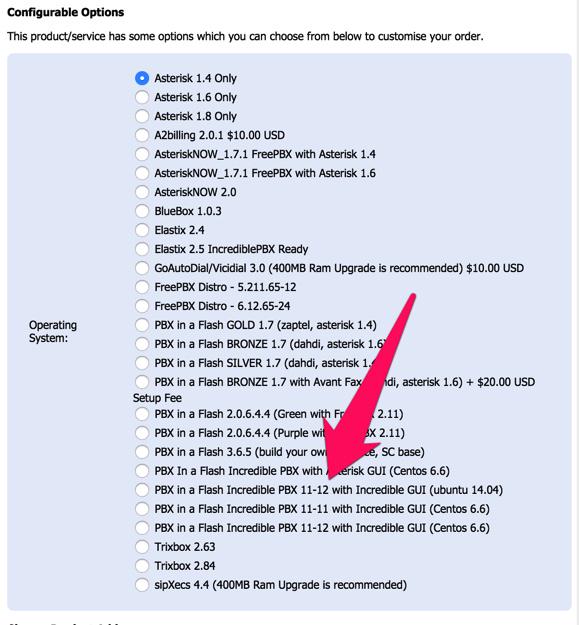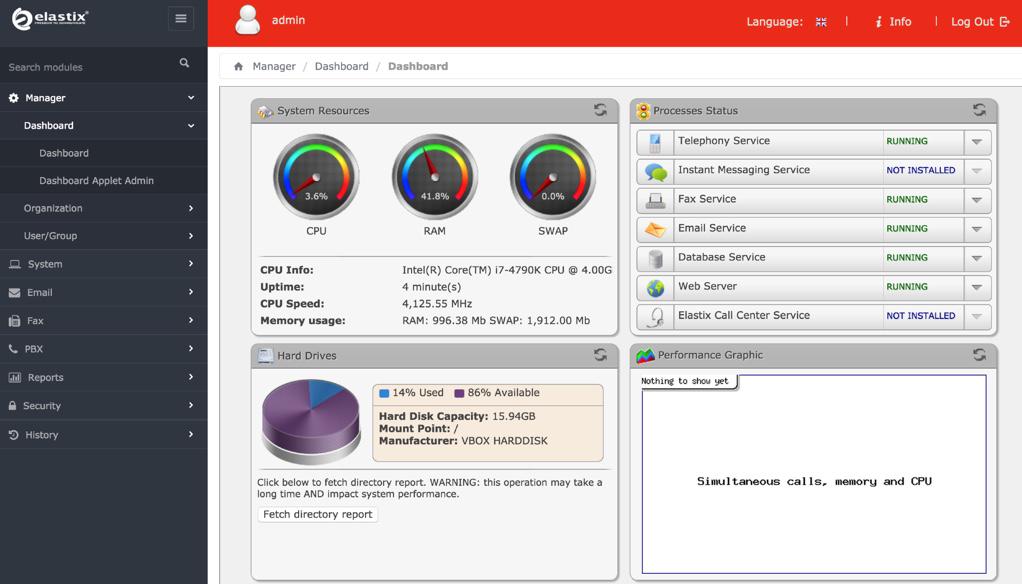Decisions, Decisions: Choosing the SOHO Asterisk Platform That’s Best For You
Each year we like to revisit the topic of choosing the best Asterisk® platform for deployment in the home and small business environment. No solution is obviously right for everybody. But we think it’s important to sketch out the relevant factors that need careful evaluation before you begin the installation process.
Our focus today is open source, GPL platforms with Asterisk for home or SOHO deployments. That excludes a broad swath of equally capable commercial or proprietary alternatives including ThirdLane, Switchvox, and FreePBX® Distro as well as many unified communications solutions that do not rely upon the Asterisk telephony engine including FreeSWITCH, ShoreTel, Cisco, 3CX, and many others. If your requirements exceed telephony support for more than a few dozen employees, our recommendation is to hire a consultant that can assist you in that decision-making process.
When It Comes to Hardware, Size Matters!
Even in the telephony world, it’s true. Size Matters! Choosing an Asterisk platform for your home and choosing a telephony platform for a call center are very different beasts. Our traditional recommendation for home and SOHO deployments was to go with dedicated hardware with an appropriately sized Atom processor, RAM, and hard drive. In the words of Bob Dylan, “The Times They Are A Changin’.” With the nosedive in Cloud processing costs and the emergence of powerful desktop virtual machine platforms, that may no longer be the smartest solution. First, it puts you in the hardware business which means you’ll have to deal with hardware failures and backups and redundancy. Second, depending upon where you live, it may not be cost-effective to maintain your own server. Electricity and Internet connectivity cost real money above and beyond hardware costs.
For home or SOHO deployments, it also depends upon what other computers already are in use around your house or office. For example, if you have a $2,000 iMac with a $100 backup drive running Carbon Copy Cloner each night, then you’ve already got a fully redundant server platform in place. You really don’t need a dedicated server for telephony to support a handful of telephones. VirtualBox® running any of the Incredible PBX™ solutions is free, and it’s fully capable of meeting your telephony requirements with no additional hardware investment.1 If your iMac’s main drive crashes, you can reboot from the attached USB backup drive with a single keystroke and never miss a beat. For those dead set on running dedicated hardware for your home or SOHO telephone system, there’s really no reason to spend more than $35 for a Raspberry Pi® 2. With its new quadcore processor and gig of RAM, it can meet or exceed any requirements you may have. Buy a second microSD card for redundancy and call it day as far as hardware is concerned.
If you’d prefer to separate your telephone system from your house or small office, a Cloud-based setup may be a better fit. Our Platinum sponsor, RentPBX,2 offers a worldwide collection of servers and will host your Asterisk-based PBX for $15 a month (Coupon Code: NOGOTCHAS) on a platform that rarely, if ever, goes down. If you like to tinker but also prefer a Cloud solution, consider Digital Ocean ($5 a month for a virtual machine) or Wable ($8 a month for up to 5 VMs).

NEWS FLASH: Effective today, RentPBX now offers all of the new Incredible PBX builds with the Incredible PBX GUI. Tutorials available here: CentOS platform or Ubuntu platform. Use the NOGOTCHAS coupon code for $15/mo. pricing.
That’s our latest take on SOHO hardware. If you have additional questions or concerns, come join the PIAF Forum and take advantage of our hundreds of gurus who will give you all of the free advice you could ever want.
I’ve Got My Hardware Platform. Now What?
The next step is choosing an Asterisk telephony platform. That used to be easy. There was Plain Ol’ Asterisk if you were a guru or there was Asterisk@Home if you wanted a GUI to guide you through the telephony maze. Now it’s more complicated. There are a number of different Linux platforms. There are a number of different Asterisk versions. And there are a number of different GUIs that support Asterisk. So let’s work our way down the list starting with the Linux platform.
Choosing the Linux Platform That’s Best for Asterisk
The gold standard for Asterisk servers has always been CentOS, a GPL clone of RedHat Enterprise Linux. It, too, is now owned by Red Hat. The old adage was that nobody ever got fired for recommending IBM. In the Asterisk community, that remains true with CentOS. Unfortunately, CentOS now comes in several flavors. There’s CentOS 6.5 which morphs into 6.6 once the latest updates are applied. Or there’s CentOS 7 which is a very different beast. For Asterisk deployments, you can’t go wrong with CentOS 6.5. It works well on the latest dedicated hardware and is supported on all virtual machine platforms.
As with choosing a language, you now have a choice of Linux platforms. There’s RedHat/CentOS, or Debian, or Ubuntu, or even Raspbian for the Raspberry Pi hardware. Unfortunately, the RedHat-CentOS and Debian-Ubuntu-Raspbian platforms have completely different languages, much like French and Spanish. The Linux packages that are included in the platforms also have different names. If you’re a Linux aficionado and you already have a favorite, stick with what you love. If you’re planning to deploy a Raspberry Pi 2, stick with Raspbian. For everyone else, CentOS 6.5 is your best bet for now.
Choosing the Asterisk Platform That’s Right for You
Believe it or not, there are many organizations still running their telephone systems using Asterisk 1.4 or 1.8 even though Digium support for those platforms ended years ago. In the commercial world, it is not uncommon to see telephone systems that are more than a decade old. With Asterisk, things are quite different. There’s a new version every year. Fortunately, Digium has adopted a new support philosophy and every other release now is anointed with the LTS (Long Term Support) moniker. An LTS release gets four years of bug fixes and five years of security updates as opposed to the other releases that come with one year of bug fixes and two years of security updates. It’s still not 10 years, but it’s certainly better than wrestling with Asterisk updates annually.
We think there remains a need to reconsider these timetables. New updates have become so complex that the releases typically are almost two years into their life cycle before there is anyone that treats the releases as anything more than experimental. This was especially true of Asterisk 12 which was a terrific new product that provided dramatic improvements particularly in the SIP area. Unfortunately, it will reach end-of-life status before the end of this year and before most folks have even had an opportunity to use it. Now we’re on to Asterisk 13 which almost no one has deployed, and it will be a year old this fall.
Choosing an Asterisk release has been further complicated by Sangoma’s FreePBX® 12 design, the only GUI platform that currently supports both Asterisk 12 and 13. If you want to deploy a commercial FreePBX module not sold by Sangoma, you’re out of luck with FreePBX 12 despite the clear language of the GPL license. If you want to deploy any GPL open source module for FreePBX 12 other than those distributed by Sangoma, you’re bombarded with nasty security alerts suggesting that your server has been compromised. We won’t beat the dead horse. There are plenty of Nerd Vittles articles to fill in the details if you are interested in the background. Suffice it to say, it is having an impact on the decision many users and companies make concerning their Asterisk platform. If you want to avoid the CrippleWare, you need to stick with FreePBX 2.11 which means that Asterisk 11 is the last supported LTS version for this platform. We continue to be an optimist, believing that Sangoma will come to their senses and figure all of this out sooner or later. But for now, that’s a snapshot of the current landscape.
Choosing a GPL-Compliant GUI That Meets Your Needs
All of the GUIs for Asterisk have one primary purpose. They are code generators for the Asterisk telephony engine, nothing more. With each of them, you can turn off your web server after using the graphical user interface, and your phone system will continue to work as designed. Imagine our surprise to learn that an Asterisk GUI developer was actually threatened by lawyers of another provider of GPL GUI software for Asterisk because both GUIs used similar GPL-generated Asterisk code.
The claim was that, while the GUI platform itself was GPL-licensed code, the actual dialplan code generated by the GUI was not GPL-licensed and hence was copyright-protected as a derivative work. In other words, you can use our GUI for free but not the code that it generates. Since the sole purpose of the GUI is to generate code, guess what your GPL license actually got you… absolutely nothing of value. Try finding that in the fine print or the GPL license much less in any published decision on copyright law. Under this interpretation, every time you click that Apply Config button, you’re downloading and using copyrighted dialplan code without a license. Just think. Lawyers get paid to spew out this bull with a straight face! Imagine getting a toaster for your birthday and then learning that you can use it for anything except making toast. Makes you want to go to law school, doesn’t it? Can you guess who the players are? Thought so.
with a straight face! Imagine getting a toaster for your birthday and then learning that you can use it for anything except making toast. Makes you want to go to law school, doesn’t it? Can you guess who the players are? Thought so.
For the rest of the story…
- An Open Letter to Sangoma: Here’s to a New Beginning in 2015
- We Have a Dream, Too: The Return of (Gotcha-free) Open Source GPL Software
- Turning the Page on Asterisk GUIs: Here’s to a New Beginning with a GUI Facelift
- Wear Something Green for May Day: The Schmoozification of Sangoma
- Freedom and the FreePBX Cloud: Is an Apple-like Ecosystem GPL-Compliant?
- Holey Socks! It’s the Missing FreePBX GPL Source Code, Or Is It?

That, my friends, is the type of players we’re dealing with in the Asterisk “community” and it’s all about money. Lucky for all of you and us, the threats were ignored, and we now have the Elastix MT GUI that respects its GPL license. We, of course, have released our own free Incredible PBX GUI for CentOS, Ubuntu, and Raspbian without the proprietary signature checking mechanism and trademark minefields. It also employs the same GPL-licensed modules as FreePBX including a publicly-accessible Cloud component that meets the source code disclosure requirements of the GPL. The choice is all yours!
Introducing the 3-Click Platform Decision Tree for Asterisk
Now that you have the background, we want to provide a simple Decision Tree tool that will guide you through choosing the Asterisk GPL aggregation that best meets your needs. After you’ve made your selections, the utility will point you to the tutorials that will walk you through downloading, installing, and using the platform of your choice. Our fully-documented Asterisk Aggregation Guide also is available. Enjoy!
Originally published: Monday, June 22, 2015 Updated: Sunday, July 19, 2015
 New Vitelity Special. Vitelity has generously offered a new discount for Incredible PBX users. You now can get an almost half-price DID from our special Vitelity sign-up link. If you’re seeking the best flexibility in choosing an area code and phone number plus the lowest entry level pricing plus high quality calls, then Vitelity is the hands-down winner. Vitelity provides Tier A DID inbound service in over 3,000 rate centers throughout the US and Canada. And, when you use our special link to sign up, the Nerd Vittles and PBX in a Flash projects get a few shekels down the road while you get an incredible signup deal as well. The going rate for Vitelity’s DID service is $7.95 a month which includes up to 4,000 incoming minutes on two simultaneous channels with terminations priced at 1.45¢ per minute. Not any more! For Incredible PBX users, here’s a deal you can’t (and shouldn’t) refuse! Sign up now, and you can purchase a Tier A DID with unlimited incoming calls for just $3.99 a month. To check availability of local numbers and tiers of service from Vitelity, click here. Do not use this link to order your DIDs, or you won’t get the special pricing! Vitelity’s rate is just 1.44¢ per minute for outbound calls in the U.S. There is a $35 prepay when you sign up. This covers future usage and any balance is fully refundable if you decide to discontinue service with Vitelity.
New Vitelity Special. Vitelity has generously offered a new discount for Incredible PBX users. You now can get an almost half-price DID from our special Vitelity sign-up link. If you’re seeking the best flexibility in choosing an area code and phone number plus the lowest entry level pricing plus high quality calls, then Vitelity is the hands-down winner. Vitelity provides Tier A DID inbound service in over 3,000 rate centers throughout the US and Canada. And, when you use our special link to sign up, the Nerd Vittles and PBX in a Flash projects get a few shekels down the road while you get an incredible signup deal as well. The going rate for Vitelity’s DID service is $7.95 a month which includes up to 4,000 incoming minutes on two simultaneous channels with terminations priced at 1.45¢ per minute. Not any more! For Incredible PBX users, here’s a deal you can’t (and shouldn’t) refuse! Sign up now, and you can purchase a Tier A DID with unlimited incoming calls for just $3.99 a month. To check availability of local numbers and tiers of service from Vitelity, click here. Do not use this link to order your DIDs, or you won’t get the special pricing! Vitelity’s rate is just 1.44¢ per minute for outbound calls in the U.S. There is a $35 prepay when you sign up. This covers future usage and any balance is fully refundable if you decide to discontinue service with Vitelity.Some Recent Nerd Vittles Articles of Interest…
- The all-new Incredible PBX GUI platform for VirtualBox is now available on Nerd Vittles. [↩]
- Some of our links refer users to service providers when we find their prices are competitive for the recommended products. Nerd Vittles receives a small referral fee from some of these providers to help cover the costs of our blog. We never recommend particular products solely to generate commissions. However, when pricing is comparable or availability is favorable, we support these providers because they support us. [↩]


 Read
Read 


 Twitter
Twitter

